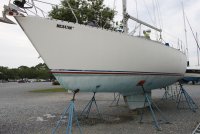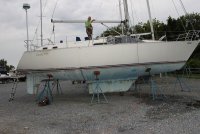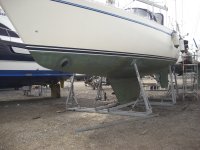M
Marc Smith
Hello, thanks for allowing a guest membership.
Looking at a 1989 Moody 376 scheel keel. The current owner is original owner, boat is located on the east coast USA, boat would stay on the east coast for the foreseeable future.
I have not put eyes on the boat yet, will do that this weekend.
what I know:
perkins power, and a generator(brand unknown) , roller furling foresail, no furling main, has been on land for the past 5-6 years, all sails and canvas have been stored off the boat in a home climate controlled. has been stored with the rig up.
I didn't see any similar questions regarding 37 376 I assume the only different between the two is the sugar scoop. if anyone has any particulars that I absolutely must look at, let me know. I;m going to browse the rest of the questions as I'm sure some of the build issues would translate from one hull to the next from the larger boats to the smaller ones.
thanks again for your wisdom...
Looking at a 1989 Moody 376 scheel keel. The current owner is original owner, boat is located on the east coast USA, boat would stay on the east coast for the foreseeable future.
I have not put eyes on the boat yet, will do that this weekend.
what I know:
perkins power, and a generator(brand unknown) , roller furling foresail, no furling main, has been on land for the past 5-6 years, all sails and canvas have been stored off the boat in a home climate controlled. has been stored with the rig up.
I didn't see any similar questions regarding 37 376 I assume the only different between the two is the sugar scoop. if anyone has any particulars that I absolutely must look at, let me know. I;m going to browse the rest of the questions as I'm sure some of the build issues would translate from one hull to the next from the larger boats to the smaller ones.
thanks again for your wisdom...




